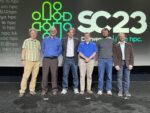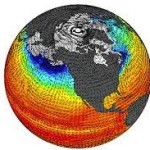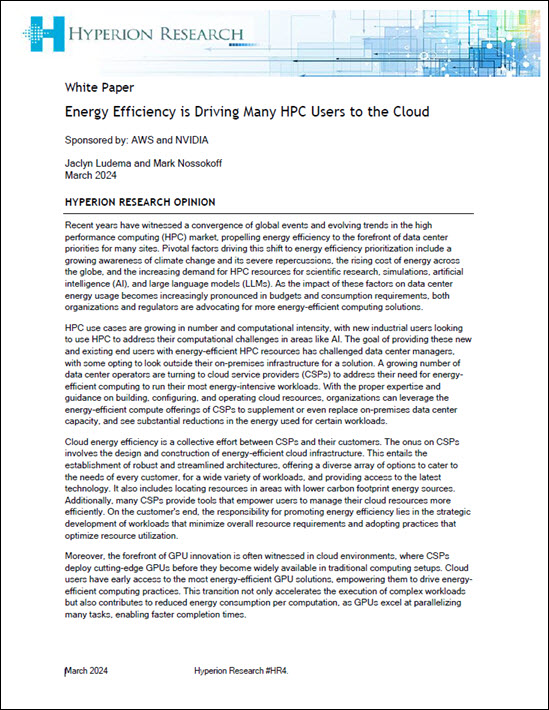A Lawrence Livermore National Laboratory (LLNL)-led effort that performed an unprecedented global climate model simulation on the world’s first exascale supercomputer has won the first-ever Association for Computing Machinery (ACM) Gordon Bell Prize for Climate Modelling, ACM officials announced Thursday. The Simple Cloud Resolving E3SM Atmosphere Model (SCREAM) team, led by LLNL staff scientist Peter Caldwell and […]
NOAA, ORNL Launch 10 PFLOPS HPE Cray HPC System for Climate Research
April 12, 2023 — Oak Ridge National Laboratory, in partnership with the National Oceanic and Atmospheric Administration, is launching a supercomputer dedicated to climate science research. The system is the fifth supercomputer to be installed and run by the National Climate-Computing Research Center at ORNL. The NCRC was established in 2009 as part of a […]
DOE Office of Science: $200M for Energy Earthshot Research Centers
Jan. 19, 2023 — The U.S. Department of Energy (DOE) announced $200 million for Energy Earthshot Research Centers (EERCs). This funding, provided by the Office of Science, will support fundamental research to accelerate breakthroughs in support of the Energy Earthshots Initiative. Applications are open to the DOE national laboratories. Partnerships with other institutions, including academia, other […]
Atos Wins £24M Settlement over UK Met Office Weather Supercomputer Contract
The Financial Times reported today that the government of the UK has paid a £24 million settlement to Atos over an £850 million contract awarded to Microsoft for a weather supercomputer to be used by the UK’s Met Office. “The French company, which was the only other shortlisted bidder, filed a lawsuit in May last […]
ACM Accepting Nominations for New Gordon Bell Prize for Climate Modelling
New York, NY, November 17, 2022 – To highlight and encourage more research focused on modelling the devastating impact of climate change, ACM, the Association for Computing Machinery, has established the ACM Gordon Bell Prize for Climate Modelling . The new award aims to recognize innovative parallel computing contributions toward solving the global climate crisis. Climate scientists and […]
HPE Weather HPC System Stood up at Meteorological Service Singapore
HPE continued its strong showing in the HPC weather sector with the announcement it has built a 401.4 teraFLOPS supercomputer for the Meteorological Service Singapore (MSS) to advance forecasting and tropical climate research for Singapore and the broader Southeast Asia region. The system delivers nearly twice the performance and advanced capabilities across compute, storage, software […]
Los Alamos, PNNL, Univ. of New Mexico Researchers to Lead $70M DOE HPC Climate Model Projects
The U.S. Department of Energy (DOE) today announced $70 million in funding for seven projects intended to improve climate prediction and aid in the fight against climate change. The research will be used to accelerate development of DOE’s Energy Exascale Earth System Model (E3SM), enabling scientific discovery through collaborations between climate scientists, computer scientists and […]
DOE: $84M Funding Opportunity for Urban Climate Research
March 25, 2023 — The U.S. Department of Energy (DOE) announced a plan to provide $84 million for new observational, modeling, and simulation studies to improve the accuracy of community-scale climate research and inform equitable climate solutions to minimize adverse impacts caused by climate change. Research will focus on three tightly related scientific topics—atmospheric and environmental […]
DOE to Provide $10M for Climate and Earth System Modeling Research
Nov. 2, 2021 — Today, the U.S. Department of Energy (DOE) announced plans to provide $10 million for new grants to universities, other academic institutions, non-profit organizations, for profit organizations, and other federal agencies within the area of Earth and environmental systems modeling research. Grants will focus on two related areas of research: further development of DOE’s flagship […]










